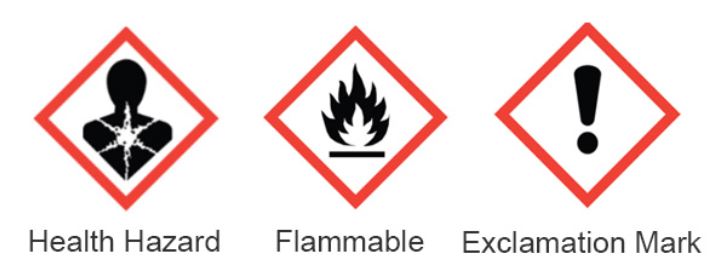 Solvent recovery definition
Solvent recovery definition
A solvent is a liquid that can dissolve various substances into a solution. In a broader sense, the solvent is a chemical reagent that transforms solids into liquid solutions (e.g. mineral acids that dissolve metals).
Solvents accompany us in many aspects of our daily lives: they are normally used by industry, in various production processes, and they also appear in domestic use. We all know from an early age that we must keep away from these substances, that we must not ingest them, that we must limit their contact with the skin, keep them away from the eyes and try not to inhale them during use because of their potential toxicity.
Most organic solvents used in both domestic and industrial applications are highly volatile (e.g. those found in some paints, alcohol or the very common acetone, which is low in toxicity and high in solvent power for paint, resins and adhesives); this means that they disperse very quickly into the surrounding environment, even at room temperature. Their use must therefore be assessed according to actual technical requirements, and their storage and handling must comply with a set of dedicated standards.
Flammability and physiological effect should be taken into account when assessing the use value of solvents.

Polar and non-polar solvents (apolar solvents)
Solvents are divided into polar solvents, i.e. solvents with a high dielectric constant, such as dimethyl sulphoxide – CH3 2SO – and non-polar solvents with a low dielectric constant, such as hydrocarbons. The most commonly used polar solvent is well-known to us: water.
Solvents are used as a medium for many types of chemical reactions, such as paint components, printing inks, adhesives, they are useful for degreasing metals and for dry cleaning textiles, as well as in chemical-technological operations and separation techniques (extraction, distillation).
Most common or most used solvents
| Name | Description |
| Acetone | aprotic, polar solvent with low toxicity and high solvent power for paint, resins and adhesives |
| White spirit | based on turpentine and other substances, it removes grease and wax |
| Denatured alcohol | dilutes paint and dissolves different types of resins, including shellac |
| Ammonia | protic solvent used in the paper industry and in organic synthesis |
| Trichloroethylene | solvent for fatty oils used professionally and industrially (non-domestic), particularly for dry cleaning |
Solvent waste: how to dispose and recover chemical solvents?
Thanks to technological progress, humans are trying to replace the most harmful and aggressive chemical compounds with others that are less dangerous and better tolerated by the environment, but whatever the nature and danger of the solvent used, a few simple basic rules must always be kept in mind:
- try not to dispose of it in the environment
- commit to generating as little polluting waste as possible
- dispose of waste solvent in accordance with current regulations
One important point concerns the disposal of small quantities of chemical solvents: in Italy, it must be done following the rules imposed by Legislative Decree 152 of 3 April 2006, which regulates all stages of waste management: collection, temporary storage, transport and disposal.
In the event of disposal, it must first be determined whether the spent solvent belongs to the “halogenated” or “non-halogenated” category, bearing in mind that disposal of the former, which is more complex, is considerably more expensive than that of the latter.
From a practical point of view, long-lasting, clearly labelled plastic receptacles are normally used which, once filled, must be temporarily stored in large (shatter-proof) metal containers within the waste-producing facility itself. Once a certain amount of waste has been collected, it is processed by companies specialising in the incineration of hazardous waste.
In the industrial and commercial sectors, however, spent solvents are recycled for reuse. This is because, with even very large quantities involved, it becomes essential to choose the recovery and recirculation path of used solvents in order to save money which, as often happens, coincides with full respect for the environment.
Waste Solvent Recycling: what does it mean? How does it happen?
The recovery of solvents at an industrial level can take place in different ways and produce different results, including economic ones.
Obviously, the most economically appealing objective is to use a solvents recovery plant to obtain a compound with a level of purity and quality that can be directly used again in production. It is precisely for this purpose that Brofind® has developed not only all the technologies for capturing solvents in the gas phase, but also for rectification and purification.
This requalification process of recovered solvents can be carried out with molecular sieves (mainly in cases where there are traces of water to be removed) or with distillation columns, if the mixture has higher chemical and physical complexities. There are simple distillation columns that operate in batches or continuously, but also real distilleries made up of several columns operating at different ranges of temperature and pressure, to ensure separation of the various compounds and their azeotropes, if any – an azeotropic mixture is a mixture of two or more liquids that do not change their composition by simple distillation.
However, there are more complex cases where the chemical and physical characteristics of the solvents to be recovered, in terms of affinity, make it impossible or uneconomic to separate the components to the required purity. In these cases, the mixture obtained from a recovery activity can be used in less demanding but still necessary applications within the company (e.g. cleaning machinery).
Moreover, given the high evaporability of solvents, if they evaporate during the production process they must be “captured” in the gaseous phase and then recovered so that they can be reused in production with specific recycling technologies
As a last resort, there is always the possibility of incinerating solvents through controlled combustion. Although this solution is technically feasible without any particular difficulty and with full respect for the environment, it is not yet considered a viable option.
 Solvent recovery definition
Solvent recovery definition